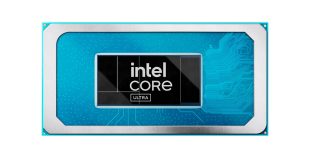Both of the side panels of the case are secured using thumbscrews which makes them easy to remove without tools. The case is available with both windowed and non-windowed side panels.
We have the non-windowed variety which features a thick sheet of sound deadening material on the inside.
As you can see the inside of the case is painted entirely black. This is should compliment most components well and is sure to make them stand out.
Over on the left hand side of the case we can see there are seven expansion slots in total. The white covers are secured using thumbscrews which should facilitate installation.
Moving down, there is plenty of room for large PSUs. There is a large vent in the floor of the case to feed the PSU with cool air which is dust filtered to prevent carpet fluff from being sucked in.
There are eight hard drive bays in total which can either be fitted with 2.5″ or 3.5″ units. The top four drive bays can be removed to improve airflow if required. The drive caddies are finished in gloss white which contrasts nicely with the black finish for the rest of the case. The drives have to be screwed into place but this only takes a few seconds.
Behind the motherboard tray there is plenty of room for routing cables. There are also a series of cable routing holes cut into the motherboard tray which feature rubber grommets to keep things tidy. The Define R4 is a little wider than the R3 which means there is also plenty of room to install large CPU coolers. There is also a large cut out section in the motherboard tray to facilitate CPU cooler installation.
Fractal Design provide a detailed guide with the case which guides us through the installation process. First of all we installed the motherboard into the system. Fractal Design don't pre-install the stand-offs into the case so we have to screw these into place before securing down the motherboard.
Next we installed the Corsair GS800 power supply into the system which screws into the back of the case. There is a large cable routing hole next to the power supply for all the cables to pass through. Then we installed the AMD Radeon HD 6950 graphics card into the system which secured into place with thumbscrews. As you can see we managed to achieve quite a tidy build despite using a non-modular power supply which is a testament to the cable routing feature of the case.
 KitGuru KitGuru.net – Tech News | Hardware News | Hardware Reviews | IOS | Mobile | Gaming | Graphics Cards
KitGuru KitGuru.net – Tech News | Hardware News | Hardware Reviews | IOS | Mobile | Gaming | Graphics Cards











They make a good case, my friend has one, and its very quiet. looks quite good too although not in the lian li category IMO.
I had been waiting for this review! I want the Node 605 but it is impossible to find and doesn’t have the sound-proof material.
Just another note; it didn’t fit the Corsair H100, but it might fit a single fan watercooler such as the H40, H60 or Antec Kuhler Series.
Greetings from Florida! I’m bored to death at work so I decided to check out your site on my iphone during lunch break.
I love the knowledge you provide here and can’t wait to take a look when I get home.
I’m amazed at how quick your site loaded on my cell phone… Even on 3G!
Anyway, just wanted to say that KitGuru has saved me from a really tedious afternoon spent at work when I should have been home, resting for New Year’s Eve!!!